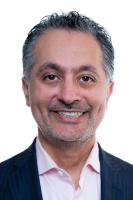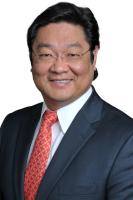Gynecomastia Breast Reduction for Men
Overview
One in 3 American men has enlarged breasts or what is colloquially called “man boobs,” sometimes with enlarged or puffy nipples. The condition is called gynecomastia and is usually caused by hormonal changes. It can occur during infancy, adolescence, or as a result of aging.
 Gynecomastia is not usually serious, but on rare occasions, it can be associated with diseases such as breast cancer, liver disease, lung cancer, adrenal or glandular tumors, congenital syndromes, thyroid disorders, or trauma. For this reason, you should see a doctor if you are a man with enlarged breasts.
Gynecomastia is not usually serious, but on rare occasions, it can be associated with diseases such as breast cancer, liver disease, lung cancer, adrenal or glandular tumors, congenital syndromes, thyroid disorders, or trauma. For this reason, you should see a doctor if you are a man with enlarged breasts.
For the majority of boys and men with gynecomastia, however, the most serious issues are embarrassment and self-consciousness. The best solution is to surgically reduce the breast tissue and reshape the chest for a masculine appearance. The plastic surgeons at Summit Health are experienced in breast reduction for men, and they are sensitive to your need for confidentiality.
“Dr. Hyans is wonderful. I recently had surgery by Dr. Hyans and was very pleased with the entire experience. He is very caring and a great doctor. His medical team and staff are the best. Very professional, and everyone made my needs and comfort a top priority. I had no doubt that I was in good, skilled hands. Would highly recommend Dr. Hyans and his team.”
Ready to get started?
The patients we see for male breast reduction range in age from 16 to 70. In younger patients, the cause is generally glandular. In the older man, the condition has usually developed as part of the aging process, and the breasts consist primarily of fatty tissue and lax skin.
We take great care to reduce scarring and return patients to their daily activities as quickly as possible. We also have a protocol that helps you manage post-operative pain and recover more quickly.
Some men combine gynecomastia breast reduction with liposuction to reduce fat in the abdomen or flanks. Read more about liposuction.
Gynecomastia Breast Reduction Procedure
When you meet with us for your consultation to find out how to get rid of gynecomastia, we will have an honest discussion about your desires, expectations, and concerns, as well as the limits and risks of the procedure. We will review your medical history and recommend options that can best help you achieve your goals. We will give you thorough written instructions to prepare for your surgery and will answer any questions you have.
If you need to lose a significant amount of weight, we may recommend that you postpone your gynecomastia surgery until you are closer to your ideal weight.
At Summit Health, the patient experience is of primary importance to us. We customize every single procedure we do so that it is tailored to what is best for you and you alone. No two men are the same, and your unique anatomy must be taken into account.
Male breast reduction surgery is usually performed at our ambulatory center. If the condition is caused entirely by fatty tissue, liposuction may be enough to restore a masculine-looking chest. In this case, local anesthesia can usually be used along with intravenous sedation, so you can go home the same day after a period of time in recovery.
With liposuction, a small incision is made, and tumescent fluid is introduced first to numb the area and reduce the chance of bleeding, as well as to loosen and soften the fatty tissues. This expansion of the fatty tissue allows the liposuction instrument to travel smoothly as it is moved in and out from beneath the skin in order to suction out the fat. The surgeon then inserts a small tube called a cannula to mechanically break down the excess fat.
If the tissue is glandular rather than fatty, the surgery is almost always performed with the patient under general anesthesia. It is still an outpatient procedure, however, and you should be able to go home the same day.
An incision is made underneath each areola (the darkened skin around the nipples), and the excess tissue is removed. In this darker area, the scar will be easily hidden once it has healed. In rare cases, loose skin must be excised as well, which may necessitate additional incisions. The area is tightened so that your chest will be flatter, and if excess skin has been removed, the areolas and nipples may need to be repositioned to a more normal location on the chest.
The surgery takes 1 to 2 hours. Whether you have liposuction or surgery for removal of glandular tissue, you will be too sleepy to drive yourself home after your surgery, so please make prior arrangements.
You will see results immediately, but it might take 6 months before you can see the final result of your procedure. After surgery, you will be wrapped in a compression garment over gauze dressings. The bandages will be replaced within 1 week after surgery during a follow-up visit at our office.
It will take several weeks until bruising and swelling completely subside. With our advanced pain protocols, our patients experience less post-operative discomfort than in the past, but some men report feeling sore for a week or more after surgery. This discomfort can be managed with pain medication, if necessary.
Most men can return to work within a few days after surgery. You should avoid strenuous activity and exercise for about 4 weeks. Most gynecomastia patients receive dissolvable stitches. During one of your follow-up visits, we will begin our scar regimen, which we continue for a few months to improve the incision areas as much as possible.
The surgery does not usually have to be repeated, but you can prevent a potential recurrence of gynecomastia if you maintain a steady weight.








